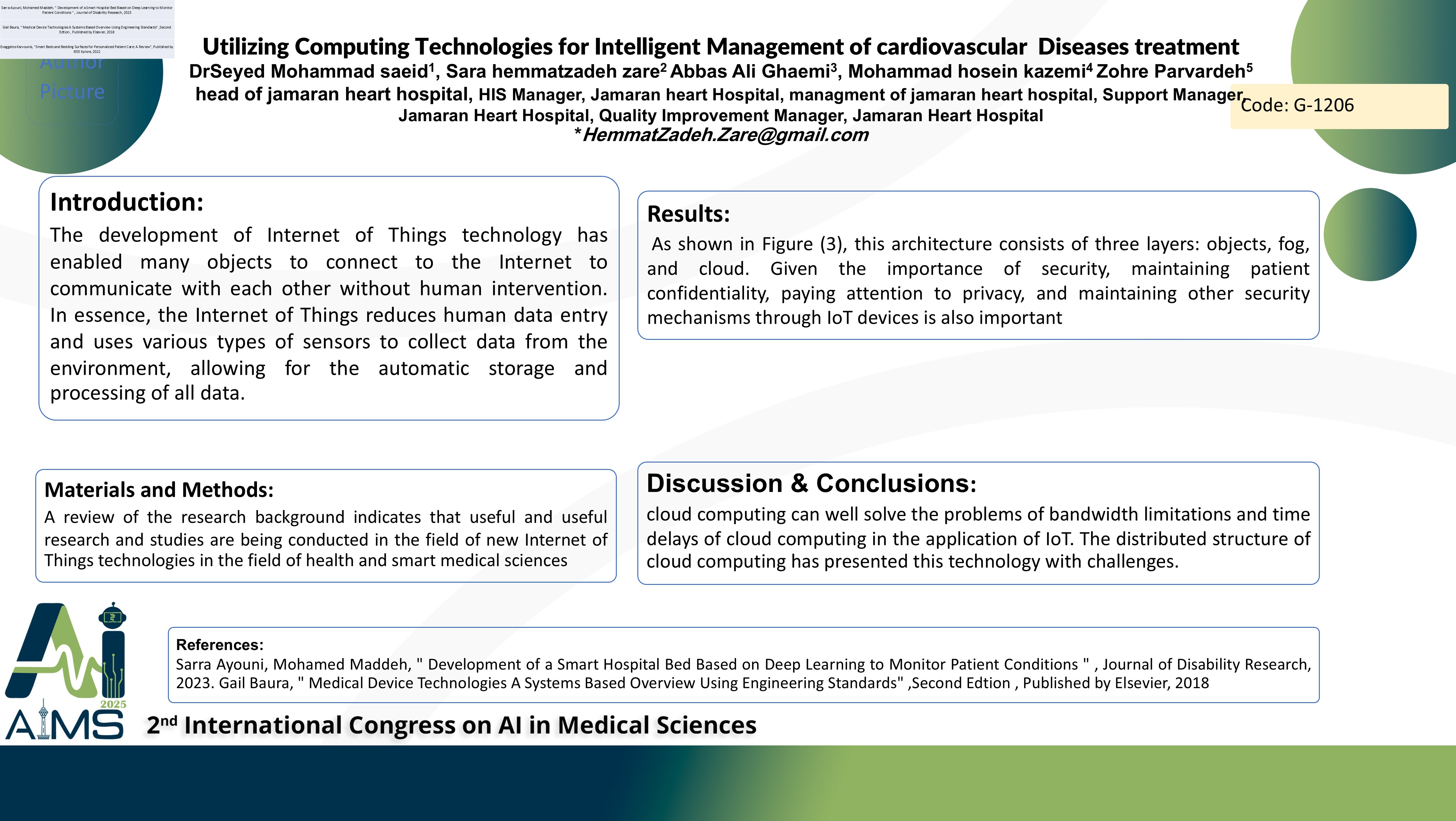Utilizing Computing Technologies for Intelligent Management of cardiovascular Diseases treatment
Code: G-1206
Authors: مهندس سارا همت زاده زارع * ℗, دکتر سیدمحمدسعید غیاثی, آقای عباسعلی قائمی, آقای محمدحسین کاظمی, خانم زهره پرورده
Schedule: Not Scheduled!
Download: Download Poster
Abstract:
Abstract
Background and aims: More than one million patients worldwide undergo coronary artery bypass grafting annually [1]. Cardiovascular diseases are currently the leading cause of death in the world. Common types of these diseases include congenital heart disease, heart attack, cardiomyopathy, rheumatic heart disease, pulmonary stenosis, and coronary artery disease. If the heart does not function properly and any of the heart problems develop, it will affect other parts of the body; therefore, it is necessary to diagnose this disease quickly [2]. The impact of advances in information technology on human life and businesses is increasing every day. Among them, we can mention the fog computing technologies in the Internet of Things. Cloud computing has created a huge revolution in the way data and software are accessed and managed by providing some major benefits to users, including eliminating the initial investment in information technology, scalability and proportional costs. The development of Internet of Things technology has enabled many objects to connect to the Internet to communicate with each other without human intervention. In essence, the Internet of Things reduces human data entry and uses various types of sensors to collect data from the environment, allowing for the automatic storage and processing of all data. Method: A review of the research background indicates that useful and useful research and studies are being conducted in the field of new Internet of Things technologies in the field of health and smart medical sciences. In [10 ] Nguyen Van Hau et al. presented and reviewed a general architecture of fog-based medical Internet of Things applications. Results: As shown in Figure (3), this architecture consists of three layers: objects, fog, and cloud. Given the importance of security, maintaining patient confidentiality, paying attention to privacy, and maintaining other security mechanisms through IoT devices is also important [4]. Conclusion: cloud computing can well solve the problems of bandwidth limitations and time delays of cloud computing in the application of IoT. The distributed structure of cloud computing has presented this technology with challenges.
Keywords
Artificial Intelligence, Internet of Things, Somatization
